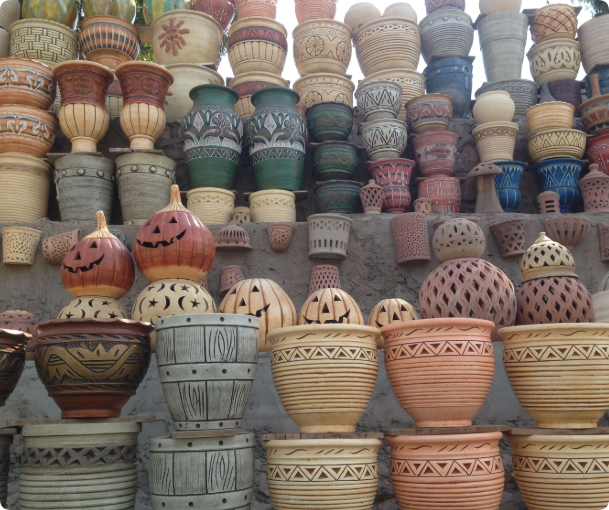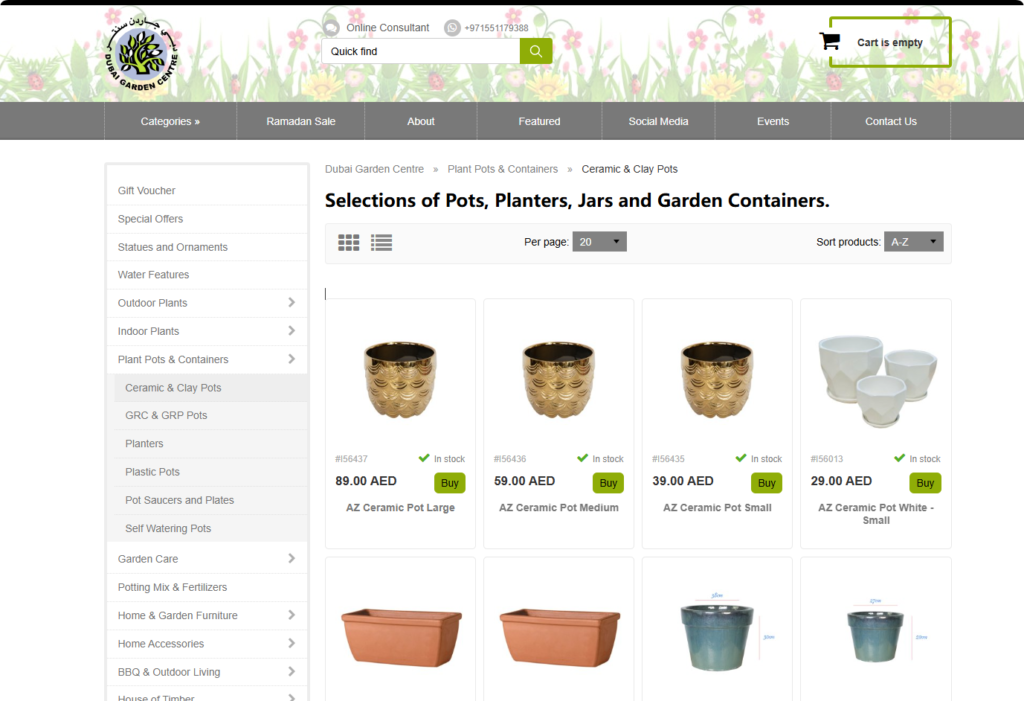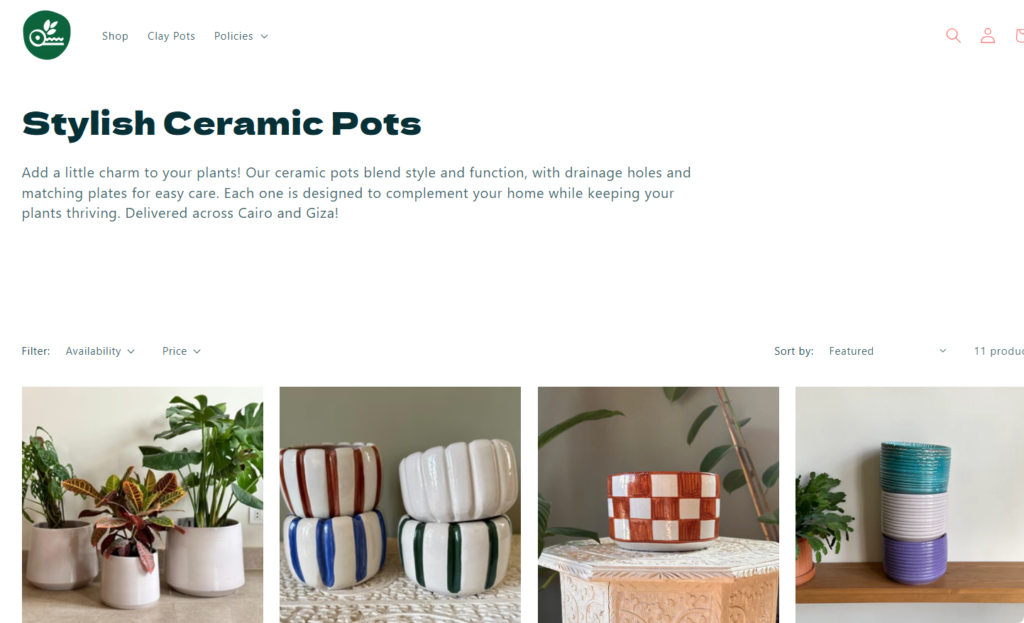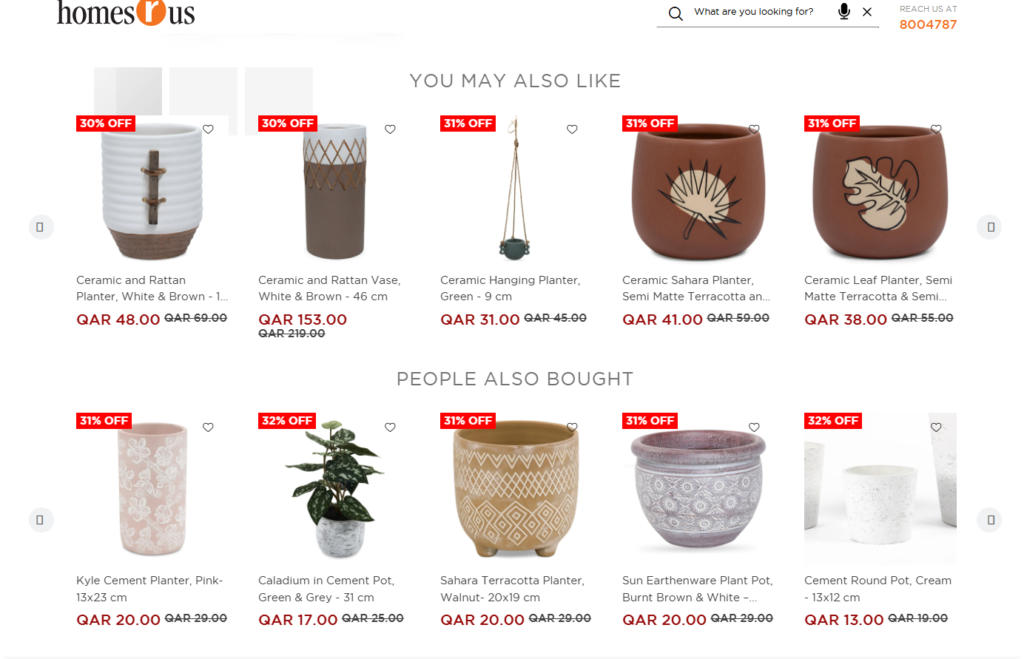The Middle East, with its rich cultural heritage and long-standing traditions, is an area where art and design meet functionality in fascinating ways. When it comes to home decor, particularly in gardening, ceramic planters have become increasingly popular, blending the region’s ancient craftsmanship with contemporary aesthetics. This dynamic fusion of traditional and modern styles has led to the rise of unique and functional ceramic garden planters that cater to the diverse tastes of homeowners and commercial buyers alike.
In this article, we’ll take a closer look at how ceramic planters are making their mark in the Middle East, exploring their cultural significance, modern design trends, and the top brands that are shaping the landscape. Whether you’re a garden enthusiast, a home decor buyer, or a cross-border e-commerce seller, this comprehensive guide will help you understand the key factors influencing the ceramic planter market in this vibrant region.
The Role of Ceramic Planters in Middle Eastern Gardens
Ceramic planters have long been a staple in Middle Eastern gardens. Traditionally, they were used for growing ornamental plants, herbs, and even vegetables, and were prized for their durability and heat-resistance in the harsh desert climate. These planters, often handmade, were designed to withstand the extreme temperatures of the region while adding a touch of elegance to outdoor spaces.
Today, ceramic planters have evolved beyond their practical roots to become sought-after decorative pieces that enhance both indoor and outdoor environments. The Middle East, with its blend of old-world charm and modern urbanization, has found ways to merge traditional and contemporary styles through ceramic planter designs.
Traditional Influences on Modern Ceramic Planters
The traditional pottery of the Middle East, particularly that from countries like Iran, Iraq, and Syria, has a profound impact on the current ceramic planter designs. In these cultures, pottery has been more than just a functional object—it has been an expression of art, heritage, and social status. Elements like geometric patterns, intricate floral motifs, and vibrant colors are commonly featured in traditional ceramics, and they are now being incorporated into modern planter designs, adding both aesthetic appeal and cultural significance.

For example, traditional Middle Eastern pottery often features the use of rich blues, yellows, and reds, and patterns that evoke the natural surroundings of the desert, such as swirling sand dunes or stylized representations of flora and fauna. This kind of artful design continues to influence ceramic planters, making them not only practical garden accessories but also unique conversation pieces in any space.
The Rise of Modern Ceramic Planters in the Middle East
With the rapid urbanization and growing interest in contemporary home decor, modern ceramic planters are seeing a surge in popularity in the Middle East. Today’s homeowners and businesses are looking for planters that combine form and function, and the market has responded with sleek, minimalist designs that complement modern interiors and exteriors.
Modern ceramic planters often emphasize simplicity, clean lines, and neutral colors like white, gray, and black, providing a versatile base that fits into any space. These planters are designed to suit a range of plant types, from small indoor succulents to large outdoor trees, offering flexibility in their use.
Additionally, the trend of “sustainability” has played a major role in the demand for ceramic planters, as more buyers are looking for eco-friendly, long-lasting alternatives to plastic or metal containers. Ceramic planters, made from natural materials, fit this need perfectly, offering an environmentally conscious option for garden lovers.
Comparing Traditional and Modern Ceramic Planters in the Middle East
When choosing ceramic planters for home or business use, there are a few key differences between traditional and modern designs to consider. Below is a comparison of these two styles, highlighting their features and benefits.
| Feature | Traditional Ceramic Planters | Modern Ceramic Planters |
|---|---|---|
| Design | Intricate patterns, bold colors, and traditional motifs like floral and geometric designs | Sleek, minimalist shapes with neutral tones and clean lines |
| Material | Often handmade, with a rustic or handcrafted finish | Smooth, polished finish with a focus on quality craftsmanship |
| Size | Typically smaller and used for ornamental plants | Available in various sizes, from small to large for different types of plants |
| Durability | Durable but can be heavy and fragile due to handmade techniques | Highly durable with added resistance to extreme weather conditions |
| Aesthetic Appeal | Rich in cultural significance and artistic detail | Modern, versatile, and suitable for a range of interior and exterior settings |
| Climate Suitability | Excellent for desert climates due to heat resistance | Well-suited for both hot and cold climates, with effective insulation properties |
This table illustrates the advantages and differences between traditional and modern ceramic planters, offering insights for buyers looking to select the right planter for their needs.
Key Ceramic Planter Brands in the Middle East
The ceramic planter market in the Middle East is growing rapidly, and several local brands have emerged as prominent players in the industry. These brands blend the region’s rich ceramic tradition with modern design sensibilities, providing an impressive array of products for both residential and commercial customers. Below are five top brands from the Middle East that are making waves in the ceramic planter market:
1.Al-Fayez Ceramic
- Country: Saudi Arabia
- Product Features: Al-Fayez Ceramic is known for its handcrafted ceramic planters featuring traditional Arabic designs and vibrant colors. Their products often include intricate floral motifs and geometric patterns, ideal for adding a cultural touch to gardens and indoor spaces.

2.Kashan Pottery
- Country: Iran
- Product Features: Kashan Pottery blends centuries-old Iranian pottery techniques with modern aesthetics. Their ceramic planters come in various shapes and sizes, with a focus on minimalist, yet artistic designs that celebrate Persian heritage.
3.Cairo Ceramics
- Country: Egypt
- Product Features: Cairo Ceramics offers a wide range of planters, from small decorative pots to large outdoor containers. Their products often feature earthy tones and traditional Egyptian designs, including motifs inspired by the Nile River and ancient Egyptian art.

4.Qatar Pottery
- Country: Qatar
- Product Features: Known for their durable and stylish ceramic planters, Qatar Pottery focuses on creating functional yet beautiful garden accessories. Their planters feature modern designs that are ideal for contemporary urban settings.

5.Dubai Ceramic Creations
- Country: United Arab Emirates
- Product Features: Dubai Ceramic Creations is a leading brand offering a diverse range of ceramic planters. They focus on combining luxurious modern designs with traditional elements, making their products perfect for both high-end residential and commercial projects.
Frequently Asked Questions (FAQs)
Q1: Are ceramic planters suitable for the Middle Eastern climate?
Yes, ceramic planters are highly durable and can withstand the extreme heat of the Middle Eastern climate. Their thick walls offer insulation, keeping the soil temperature stable even in high temperatures.
Q2: How do I maintain my ceramic planters?
Ceramic planters are low maintenance. Ensure that they are placed in a well-drained area, and occasionally clean them with mild soap and water to maintain their appearance. Be mindful of extreme weather conditions that could cause cracking if the ceramic is exposed to freezing temperatures.
Q3: Can I use ceramic planters indoors?
Absolutely! Ceramic planters are perfect for indoor spaces, especially when paired with modern interior decor. Their versatile designs make them suitable for both home and office environments.
Q4: Are ceramic planters environmentally friendly?
Yes, ceramic planters are made from natural materials like clay, making them an eco-friendly choice compared to plastic or metal planters.
Conclusion
Ceramic planters in the Middle East have evolved from traditional, handcrafted pieces into modern, sleek designs that cater to a wide variety of tastes and preferences. By merging the region’s rich cultural history with contemporary design elements, ceramic planters have found their place in the hearts and homes of garden lovers across the Middle East.
Whether you’re a buyer, a business owner, or an e-commerce seller, understanding the diverse ceramic planter options available can help you make informed choices when selecting garden decor. The Middle East’s market for ceramic planters is thriving, and by incorporating local styles and trends, you can bring a touch of this beautiful region into your own space.
By working with manufacturers offering OEM and ODM services, you can access a wide variety of ceramic planters that cater to global tastes. These services allow you to customize your products, whether you’re a local business or an international buyer, ensuring that your products meet the specific needs of your customers.

